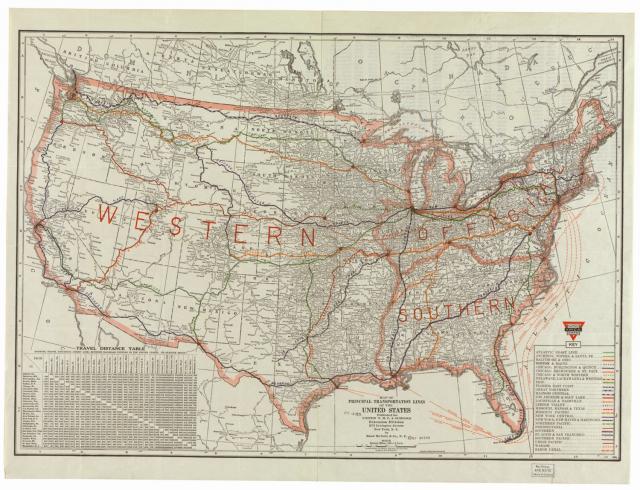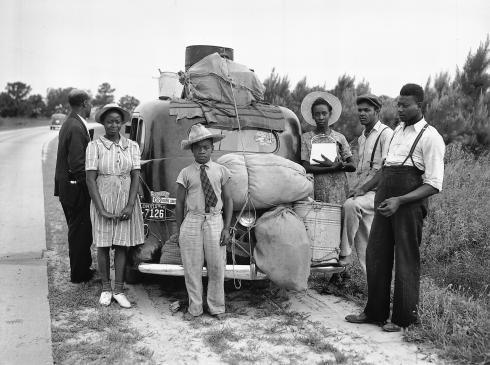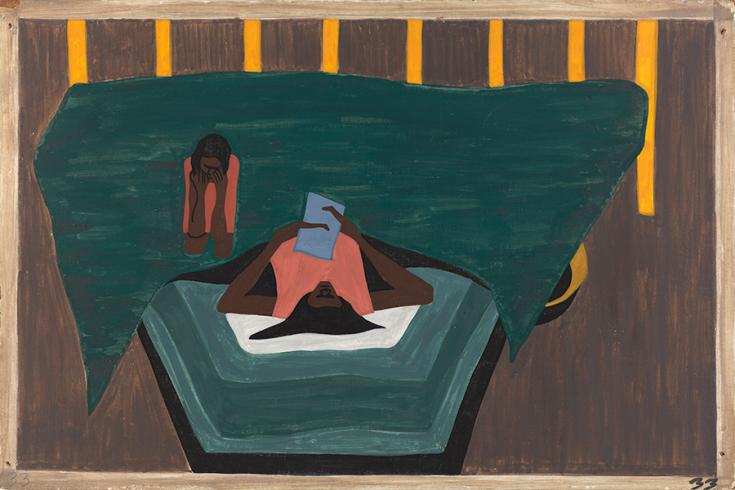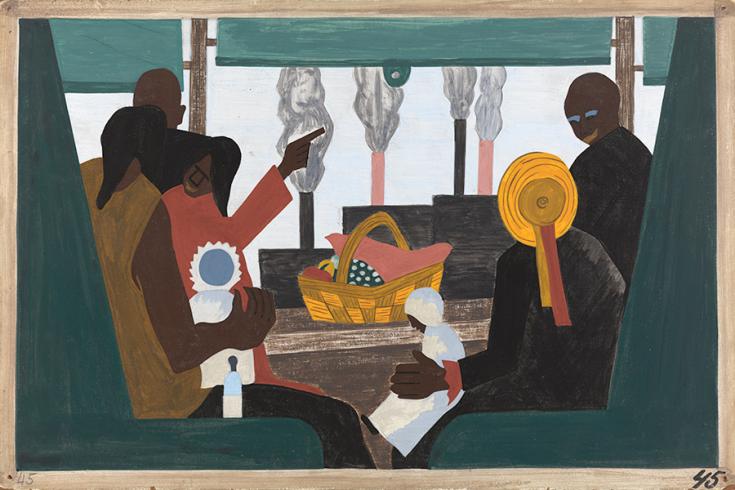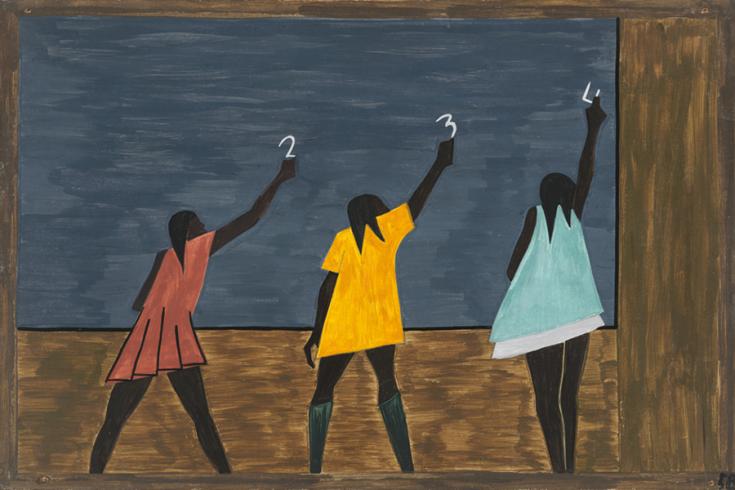Letters from the North

Part 1: The Great Migration - Building Historical Context
Introduce:
- Explain to the students that they will be learning about The Great Migration, which was a period of time between 1916-1940 when African Americans migrated from the South to the North to cities such as Chicago, Detroit, Philadelphia, and New York.
- Students will be able to answer:
- What are some reasons African Americans migrated from the South to the North?
- What was life like in the North for African Americans? How did the reality of life in the North match and diverge from what the migrants hoped life would be like?
Read and Analyze:
- Independently, students read: “And the Migrants Kept Coming” by Alain LeRoy Locke. Provide printed copies to each student so they can annotate as they’re reading.
- While they’re reading, students should underline reasons why African Americans left the South and reasons why they migrated North.
Discuss:
- After reading, in groups of 3-4, students should:
- Discuss their findings from reading the article, specifically about the migrant experience from the South to the North.
- Create a T-Chart on chart paper. On one side, write “Reasons for Leaving the South.” On the other side, write “Reasons for Migrating North.” List reasons under each side.
Part 2: Art Tells Stories
Observe and Analyze:
- In their groups, students will observe the following panels from The Migration Series: Panels no. 37, 38, 44, 47, 49, 50, 51, 53, 55, 58, 59.
- As students are studying the panels, they should use the See, Think, Wonder strategy. Students should discuss each panel in their small groups and then capture their thoughts on chart paper divided into three columns with the headings “See,” “Think,” and “Wonder.” Student should:
- Write down what they see in the first panel.
- Write down what they think about what they see, particularly as it relates to what life was like in the North.
- Write down what they wonder about what they see, specifically how migrants may have felt about the realities of life in the North.
Part 3: Letters from the North
Discuss and SYNTHESIZE:
- In a whole group discussion, pose the two questions that were introduced at the start of the lesson:
- What are some reasons African Americans migrated from the South to the North?
- What was life like in the North for African Americans? How did the reality of life in the North match and diverge from what the migrants hoped life would be like?
- As students are discussing, they should use evidence from the reading, the selected panels from The Migration Series, their See/Think/Wonder charts, and their small group discussions to support their responses to those questions.
- After the discussion, students will write three letters to a family member or friend in the South from the perspective of a migrant. Students should write in the conversational style—how they would talk to the person to whom the letter is addressed.
-
LETTER 1: YOU JUST MOVED TO A CITY IN THE NORTH
- Describe your journey to the North. How did you get there? What did you experience along the way?
- Describe your first impressions of the new city. To what city did you move (for example, some of the most common cities were Chicago, New York, Detroit)? What do you hear? What do you smell? What do you see? How is it different from home in terms of your first impressions? Suggest students research what that city was like in the 1910s-1940s.
- Describe your hopes for your new life. Use the reading and the panels to describe what you hope to experience from this move.
-
LETTER 2: YOU’VE BEEN IN THE NORTH FOR 6 MONTHS
- Describe some of the differences between the South and your new home. What is your house like (research the types of housing people would have lived in up North versus in the South)? What kinds of foods have you tried (research popular foods in this city)? How do you get around the city (research modes of transportation)?
- Describe some of the realities of living in the North. What’s been different about life in the North? What parts of life in the North have been good? What parts of life in the North haven’t been going well? Has everything been what you expected it to be? What is different from what you had hoped for? How do you feel about that? Use the reading and the panels to support your writing.
- Describe how you’re feeling about your new life at this point. What do you miss about home/life in the South? Do you want to stay in the North? Explain reasons why and why not.
-
LETTER 3: YOU’VE BEEN IN THE NORTH FOR A YEAR
- Describe any new realizations you’ve made. What have you been able to take advantage of? With what are you still struggling?
- Describe your hopes at this point. Would it be better to go back South? Why or why not?
- Describe what hopes you have moving forward and why this journey was important for you even if there have been challenges. What does the journey mean overall for you? What about for other Black people wanting to make the journey? How might your life continue to change after several years of living in your new city?
-
Additional Context
Lesson Context
Jacob Lawrence’s ambitious 60-panel Migration Series portrays the Great Migration, the flight of over a million African Americans from the rural South to the industrial North following the outbreak of World War I. By Lawrence’s own admission, this was a broad and complex subject to tackle in paint, one never before attempted in the visual arts. The series captures themes of struggle, hope, triumph, and adversity, much like some of his narrative portraits on figures such as Harriet Tubman, leader of the Underground Railroad (1940), Frederick Douglass, abolitionist (1939), and Toussaint L’Ouverture, liberator of Haiti (1938).
Key Terms
306 Workshop: A collective made up of artists, musicians, and writers who rented studio space at 306 West 141st Street in Harlem during the Harlem Renaissance.
Great Migration: In the Southern US, African Americans endured blatant discrimnation and segregation as part of Jim Crow laws, as well as poor economic conditions. In the hopes of improved living and working conditions, hundreds of thousands of African Americans migrated from the South to the North, in particular to Chicago, Los Angeles, Detroit, Philadelphia, and New York, between 1916-1940. The Great Migration happened in two major waves: the first one being from 1916-1940 and the second one from 1941-1970.
Harlem Renaissance: The largest concentration of African Americans who migrated during the Great Migration moved to Harlem. From the 1910s to mid-1030s, the neighborhood of Harlem in New York City became a hub of African American culture, with an explosion of literature, music, theater, and the arts.
Reconstruction: The Reconstruction era in the United States immediately followed the American Civil War, from 1865-1877, and the end of Slavery. The American government attempted to address slavery and its lasting effects, including political, social, and economic inequities, as well as new issues that arose from the 11 Confederacy states rejoining the Union. Despite Reconstruction efforts, many states enacted laws that perpetuated inequities and restricted African Americans’ civil rights.
Segregation: The enforced separation of different racial groups in a country, community, or establishment.
